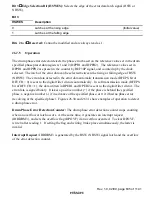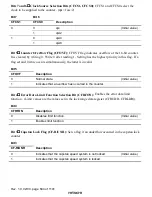
Rev. 1.0, 02/00, page 629 of 1141
26.7
Drum Phase Error Detector
26.7.1
Overview
The drum phase control system must start after the drum motor has reached the specified
revolution speed by the speed control system. Drum phase control works as follows in record and
playback mode.
•
Record Mode: Phase is controlled so that the vertical blanking intervals of the video signal to
be recorded will line up along the bottom edge of the tape.
•
Playback Mode: Phase is controlled so as to trace the recorded tracks accurately.
A counter detects the phase error against a preset value. The phase error data is processed and
added to speed error data in a digital filter. This filter controls a pulse-width modulated
(PWM) output, which controls the revolution phase and speed of the drum.
The DPG signal from the drum motor is reshaped into a square wave by a reshaping circuit,
and sent to the phase error detector.
The phase error detector compares the phase of the DPG pulse (tach pulse), which contains
video head phase information, with a reference signal. In the actual circuit, the comparison is
carried out by comparing the head-switching (HSW) signal, which is delayed by a counter that
is reset by DPG, with a reference signal value. The reference signal is the REF30 signal,
which differs between record and playback as follows:
•
Record: Vsync signal extracted from the video signal to be recorded (frame rate signal,
actually 1/2 Vsync).
•
Playback: 30 Hz or 25 Hz signal divided from the system clock.
















































